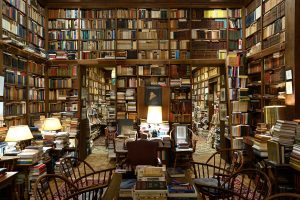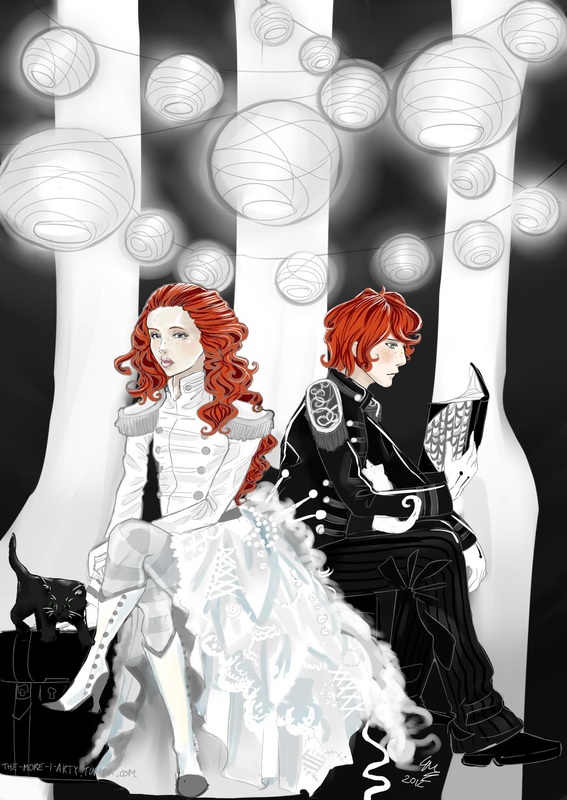Unveiling Enchanting Secrets: Exploring Symbolism in Erin Morgenstern’s “The Night Circus”
Introduction:
Welcome to the realm of magic and mystery, where illusions come to life and the boundaries between reality and fantasy blur. I am Fred Wilson, your guide through the enchanting landscapes crafted by the brilliant Erin Morgenstern in her masterpiece, “The Night Circus.”
As a literary enthusiast, I have always found joy in deciphering the hidden meanings woven into the fabric of novels. Join me on this immersive journey into the heart of “The Night Circus,” where every tent holds a secret, and every word conceals a whisper of deeper significance.
The Veil of Mystery: An Overview of ‘The Night Circus’
“The Night Circus” opens its curtains to reveal a world of wonders, drawing readers into a labyrinth of enchantment. Morgenstern’s prose invites us to step beyond the ordinary and embrace the extraordinary. The allure of the narrative is not just in the plot but in the atmospheric charm that captivates from the very first page.
In my personal encounter with the novel, I was immediately struck by the author’s ability to create a world that felt both fantastical and familiar. It is within this delicate balance that the magic of “The Night Circus” unfolds—a magic that lies not only in the story but in the layers of symbolism waiting to be unraveled.
Decoding Symbolism: Whispers in the Moonlight
Morgenstern is a master of subtlety, and within the moonlit tents of her circus, symbols whisper profound truths. As we delve into the symbolism within the narrative, it becomes evident that every element serves a purpose beyond its surface appearance.
Consider the recurring theme of clocks, which dot the landscape of the circus. These ticking mechanisms are not mere props; they are carriers of profound symbolism, representing the relentless passage of time and the inexorable march of destiny. In Morgenstern’s world, time is not just a concept; it’s a force that shapes the fates of her characters.

The Dance of Dualities: Light and Dark
At the heart of “The Night Circus” lies a dance of dualities—light and dark, love and loss. The novel’s central conflict, embodied in the characters of Celia and Marco, explores the delicate balance between opposing forces. The interplay of light and dark is not just a visual spectacle within the circus tents but a metaphor for the complexities of life and the choices we make.
In my interpretation, Morgenstern invites readers to reflect on the shades of gray that exist between the extremes. The night, with its darkness, is not something to be feared but a canvas upon which the vibrant colors of the circus can truly shine.
Characters as Puppets: Strings of Fate
The characters in “The Night Circus” are not mere players in a story; they are vessels of symbolic expression. As we analyze the intricacies of each character, we discover that they are not only individuals with their own desires and motivations but also symbols representing broader themes.
Consider Chandresh, the enigmatic proprietor of the circus, as the puppet master orchestrating the grand performance. His role extends beyond the confines of the narrative, embodying the idea that, in life as in the circus, unseen forces pull the strings of fate.
The Circus as a Metaphor: Beyond the Tents
The circus itself emerges as a powerful metaphor, transcending its role as a mere setting. It becomes a microcosm of life’s journey—a journey filled with wonder, challenges, and unexpected turns. The tents, each a universe of its own, symbolize the diverse experiences that shape our individual narratives.
Morgenstern’s choice of a circus as a backdrop is intentional, inviting readers to reflect on the transient nature of existence. The circus, like life, is a fleeting spectacle, and within its confines, we find moments of joy, sorrow, and everything in between.

Reader’s Journey: Navigating the Labyrinth of Interpretation
As you embark on your own journey through “The Night Circus,” I encourage you to embrace the ambiguity and interpretative richness that Morgenstern offers. The beauty of this novel lies in its ability to evoke diverse interpretations, and your journey will be uniquely yours.
Here are a few tips to enhance your reading experience:
- Immerse Yourself: Let the prose wash over you like a gentle spell. Immerse yourself in the atmospheric beauty of Morgenstern’s writing.
- Follow the Whispers: Pay attention to the subtle hints and whispers scattered throughout the narrative. Morgenstern leaves clues for the astute reader.
- Reflect on Symbols: Pause to reflect on the symbols encountered—the clocks, the scarves, the illusions. Consider their multiple layers of meaning.
- Embrace Ambiguity: Don’t shy away from ambiguity. Allow the narrative to unfold its mysteries without the need for clear-cut answers.
Visual Table: Key Points in “The Night Circus”
| Aspect | Symbolism |
|---|---|
| Dualities | Light and Dark, Love and Loss |
| Characters | Puppets of Fate, Symbolic Roles |
| The Circus | Metaphor for Life’s Journey |
| Unveiling Secrets | Whispers, Hints, Subtle Clues |
| Reader’s Interpretation | Personal Exploration, Diverse Perspectives |
Comparative Table: Symbolic Elements in “The Night Circus”
| Symbol | Interpretation |
|---|---|
| Black and White | Dichotomy, Moral Ambiguity |
| Clocks | Passage of Time, Destiny |
| Red Scarves | Love, Connection, Interwoven Fates |
| Smoke and Mirrors | Illusion, Deception, Artistic Expression |
| Revealing Tattoos | Personal Identity, Unveiling True Self |
Conclusion:
In the magical world of “The Night Circus,” every page holds a secret, every tent conceals a revelation. Erin Morgenstern’s masterful storytelling goes beyond the ordinary, inviting readers to explore the profound symbolism woven into the narrative.
As we bid farewell to the circus tents and close the book, let the echoes of symbolism linger. May your reading of “The Night Circus” be not just a literary experience but a journey of self-discovery—a journey where symbols become mirrors reflecting the magic within.




